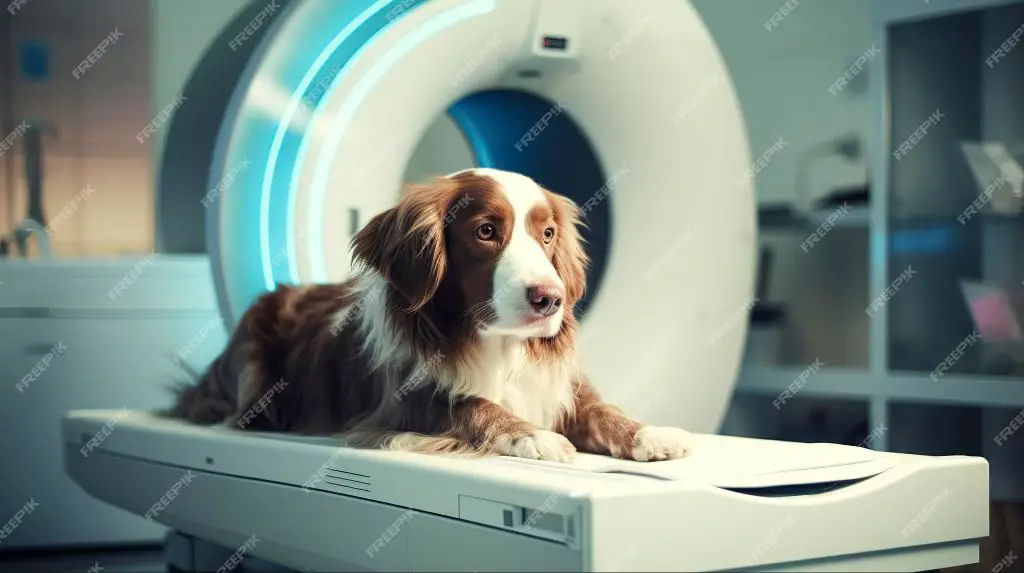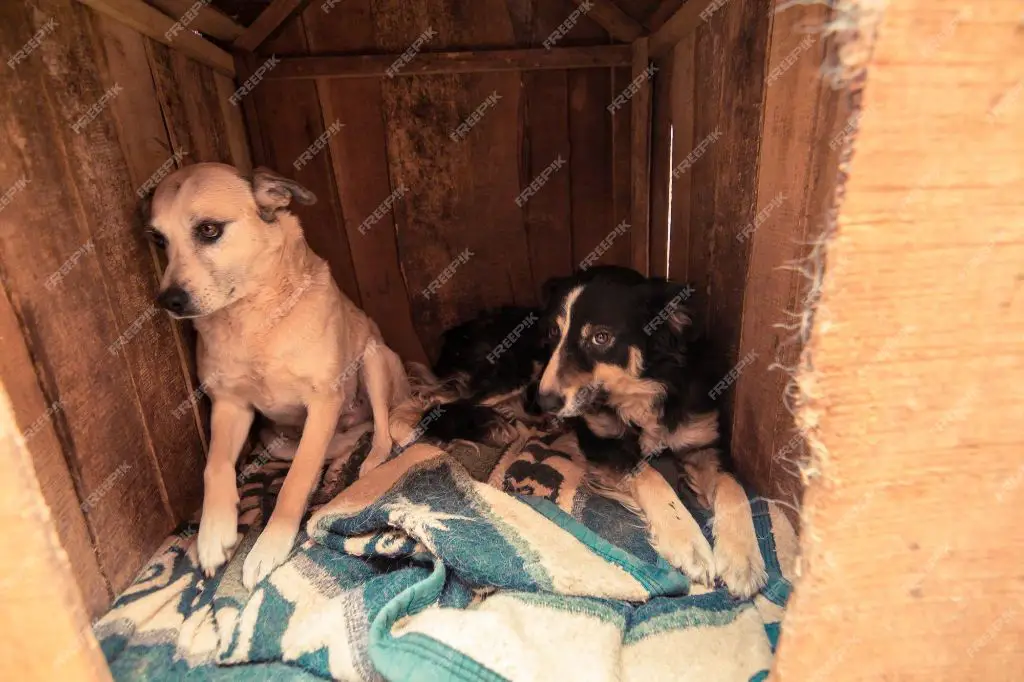Introduction
Determining the owner of a lost dog you’ve found can be a tricky but important process. Reuniting pets with their rightful owners brings happiness to both parties and ensures the dog returns to a home where it is loved and cared for. However, if an owner cannot be located, finding a stray or abandoned dog provides an opportunity to bring a new canine companion into your life. This guide will walk through various methods to identify a lost dog’s owner or determine that you’ve found yourself a new furry friend.
Look for Identification
The first step when you find a stray dog is to check if it has any identification that could help locate its owner. Carefully inspect the dog’s neck to see if it is wearing a collar with tags. Collars with license and rabies tags will often have the owner’s contact information engraved. You can call the numbers listed to reach the owner. Some dogs also have identification tags separate from their license and rabies tags that include the dog’s name and the owner’s phone number.
Additionally, many owners now have their dogs microchipped. This is a small chip implanted under the dog’s skin, usually between the shoulder blades, that contains identification information. Most veterinary offices and animal shelters have microchip scanners to detect if a stray dog is microchipped. When scanned, the microchip displays the owner’s contact information. Some owners may also have their phone number or address tattooed on their dog as a means of identification.
Always carefully inspect a found dog for all forms of identification before proceeding with any other steps. If the dog has a way for you to contact its owner, that will be the fastest and easiest way to get it safely back home.
Contact Local Shelters
One of the best ways to find a lost dog’s owner is by contacting local animal shelters and reporting that you have found a stray dog. Provide the shelter staff with a detailed description of the dog, including its breed, color, gender, approximate age and size, and any distinguishing marks. Also let them know exactly where and when you found the dog. Shelters often keep records of lost pet reports and may be able to match your description to a missing dog.
Many shelters also have online lost and found databases you can search to see if someone in the area has reported their dog missing. Describe the dog you found and ask the shelter to cross reference your description with dogs reported lost. If there is no match, ask the shelter to keep your contact information on file in case an owner comes forward later looking for a dog matching the description.
Check back with the shelters regularly to see if any lost dog reports matching your found dog have been filed since your initial contact. Shelters are one of the main places good samaritans and pet owners turn to when trying to be reunited with a lost dog. Maintaining regular communication with local shelters maximizes your chances of getting the dog home.
Consult a Vet
One of the best ways to identify a lost dog and find its owner is to take it to a local veterinary clinic or animal hospital to have it scanned for a microchip. Most dogs are microchipped by their owners, and the chip contains contact information that can be used to reunite pets with their people.

Bring the dog to the vet and ask them to scan it for a chip. The vet will use a handheld scanner that reads radio frequencies emitted by the microchip when activated. If the dog has a chip, the vet can use the unique ID number to look up the owner’s contact information in a registry database. Most major microchip companies make their registries available to vets for this purpose.
If the vet locates owner information, they can contact the owner directly and facilitate a reunion. Even if the registration information is outdated, the vet may be able to use the chip company and ID number to track down a current address and phone number for the dog’s owner.
Getting the dog scanned for a microchip is quick, easy, and free at most veterinary offices. It should be one of the first steps when attempting to identify a lost dog and locate its owner. A microchip can provide the key details needed to get the dog safely back home.
Post Found Dog Signs
One of the most effective ways to find the owner of a lost dog is to post found dog signs around the area where the dog was found. These signs should include:
- A photo of the dog
- The location where the dog was found
- Your contact info (phone number and/or email address)
Be sure to post the signs in high-traffic areas near where the dog was found – places like grocery stores, coffee shops, libraries, community centers, vet offices, pet stores, dog parks, etc. You can post on bulletin boards, utility poles, and other visible community spaces.
The photo of the dog will help the owner recognize their lost pet. Providing the location found and your contact info gives the owner a way to get in touch with you if they think the dog is theirs. Posting in areas near where the dog was found increases the chances an owner who lives nearby or frequents the neighborhood will see the signs.

You can also ask neighbors, mail carriers, and businesses in the vicinity to post the found dog signs. The more signs posted in the local area, the better chance of the owner seeing them and reuniting with their lost dog.
Notify Local Authorities
Contacting local police or animal control can be an important step in finding the owner of a lost dog. Animal control officers will often take reports about found dogs and match the description to any lost dog reports they have received.
Provide the authorities with details about where and when you found the dog, as well as a thorough description – breed, color, gender, approximate age and weight, collar or microchip details, and any distinguishing features. Offer to bring the dog in so officers can visually inspect and scan for a microchip.
Police may also circulate details about found dogs in their jurisdictions. If the dog ends up at a local shelter, providing authorities with information can help them potentially identify and contact the owner faster. Checking in with police and animal control gives owners another avenue to be reunited with their lost pets.
Post Online
Posting about the found dog online can help locate potential owners. Here are some tips for using social media and lost pet sites effectively:
Create posts on Nextdoor, Facebook, and other neighborhood groups describing the dog and where it was found. Include clear photos showing the dog’s identifying features. Monitor these posts for anyone claiming the dog is theirs.
Check lost pet sites like FindingRover.com that use facial recognition technology to match found pets with lost dog reports. Upload a picture of the dog and provide location details to find possible matches.

Post on Craigslist in the lost and found pets section with details about the breed, sex, coloring, collar, microchip, where found, and contact info. Refresh the post regularly.
Tweet details on Twitter and tag local animal shelters, pet stores, vets, and rescue organizations so they can retweet. Use hashtags like #founddog #cityname.
Post on MissingPetPartnership.org which alerts local vets and shelters. Enter the dog’s details so owners can search.
Leveraging online lost and found pet communities widely can help reunite a lost dog with its owner quickly.
Advertise in Local Media
Posting a found dog ad in local newspapers and community bulletins can be an effective way to locate the dog’s owner. Local media outlets often have lost and found pet sections that are widely read by community members. When placing a found dog ad, be sure to include a photo of the dog, a detailed description including breed, gender, age, color, and any distinguishing features. Also provide the location where the dog was found and contact information so the owner can get in touch. Include any additional helpful details such as whether the dog was wearing a collar or tags.
Make the ad descriptive enough so the owner will recognize their lost pet. Community bulletins and newsletters by neighborhood associations, churches, libraries, and schools are also great avenues for getting the word out locally about a found dog. The more places the ad appears, the higher the chances are of it being seen by whoever is searching for their lost four-legged friend.
DNA Testing
If other methods for finding the dog’s owner come up empty, DNA testing may be a good option. There are a number of dog DNA tests available that can help identify the breed and ancestry of an unknown dog.
One popular dog DNA test is Wisdom Panel. This test uses a simple cheek swab to collect DNA from the dog. The sample is then analyzed to determine the dog’s genetic background including information about breed makeup and ancestry going back several generations. Wisdom Panel tests for over 350 breeds, types and varieties.
The Wisdom Panel results provide a genetic profile of the dog that can give owners insight into characteristics like appearance, size, temperament and health predispositions. This information can help identify breed-specific traits that may make it easier to find the dog’s owner.
The breed information from a Wisdom Panel test can also aid shelters and rescue groups in placing the dog should an owner not be located. Knowledge of breed makeup and tendencies can help match the dog with potential adopters.
While DNA tests like Wisdom Panel do require an investment of $100 or more, they provide valuable breed data that can greatly assist in returning a lost dog home or placing it in a new forever home if needed.
What If No Owner is Found?
If you are unable to locate the dog’s owner after exhausting all options, you will need to decide what to do with the dog long-term. Here are some options to consider:
-
Surrender to a shelter or rescue group – Get in touch with local animal shelters and rescue groups to see if they have capacity to take in a stray dog. Be prepared to provide details about the dog’s temperament, health, age, etc. Shelters will likely only accept the dog if they have space and resources available.
-
Keep the dog yourself – If you have become attached to the dog and have the ability to provide it a good home, you may opt to officially adopt it yourself. Be sure you are ready for the long-term commitment and expenses of properly caring for a pet before going this route.
-
Continue searching for the owner – Don’t give up too quickly. The owner may still be searching. You can extend your search efforts by continuing to post online and put up flyers further afield. Expanding your search area and persisting over time increases the chances of locating the rightful owner.

At some point you will need to make a decision on rehoming if it is clear the dog has no owner coming for it. Shelters generally advise waiting 1-2 weeks before adopting out a stray dog or puppy. Be sure to follow all local laws and regulations regarding stray pets during this process.